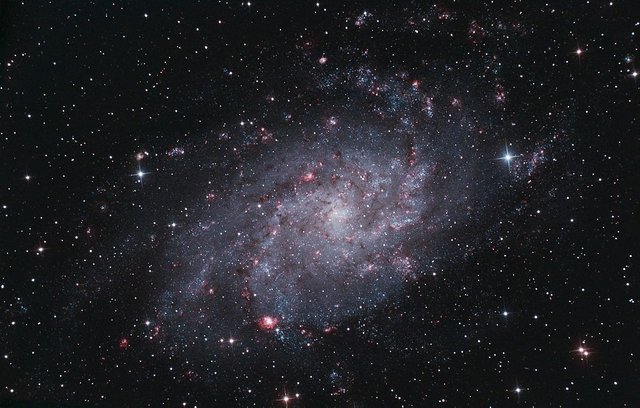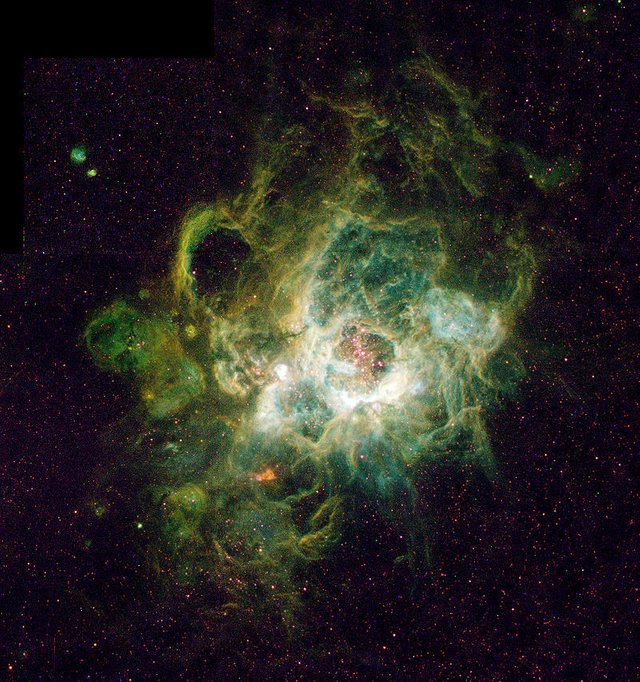Messier 33: Triangulum Galaxy

Triangulum Galaxy Messier 33. Image source: [1]
In the small northern constellation of the Triangulum is Messier 33, a splendid spiral galaxy. It is also known as the triangle galaxy, Messier 33 exceeds 50,000 light years in length, so it is located third in size in the Local Group of galaxies, after the galaxy of Andromeda (Messier 31) and ours, the Milky Way.
This galaxy, Messier 33, takes its name from the constellation to which it belongs, Triangulum, and not from its form as mistakenly think those who are approaching this interesting object for the first time.
The first news we have of the Galaxy of the Triangle is provided by Giovan Battista Hodierna, who in his work "Orbis systemate cometici; deque admirandis caracteribus Coeli ", published in 1.654, cites a mysterious nebula near the Triangle. The visual magnitude of the object observed by Hodierna coincides with that of Messier 33, so we must attribute its discovery to the Sicilian astronomer. Much later, although it seems to be that independently, it was discovered by Charles Messier during the night of August 25 to 26, 1764, which defines it as a nebula without stars between the Constellation of Pisces and the Triangle. Classified also by William Herschel.
Messier 33 is located about three million light-years away. Among the many star-forming regions in the spiral arms of Messier 33, the giant nebula NGC 604 stands out. With a diameter of about 1,500 light years, this is one of the largest known emission nebulae. It extends over an area 40 times larger than the visible part of the Orion Nebula.

NGC 604 in the Triangulum Galaxy. Image source: [2]
More details here: Messier 33

Triangulum Galaxy (Messier 33), taken with amateur equipment. Image source: [3]

Triangulum Galaxy taken by VLT Survey Telescope. Image source: [4]

Infrared image of M33 taken with the Spitzer Space Telescope. Image source: [5]

Ultraviolet image of M33 by GALEXobservatory. Image source: [6]

NGC 604, a star-forming region in the Triangulum Galaxy, as imaged by the Hubble Space Telescope. Image source: [7]
European Southern Observatory (ESO)

Our universe is great.
I like this post. Fascinating very.
:D
Fabulous! Space science is just superb
Help me upvote and resteem this post on Hurricane Maria in Puerto Rico
https://steemit.com/news/@mickyscofield/puerto-rico-needs-our-prayers-and-support
Excellent post, I liked it, I follow you to read what you publish, you pass by my profile, maybe something that interests you too, keep posting like this :D
Congratulations @jonathanxvi, this post is the ninth most rewarded post (based on pending payouts) in the last 12 hours written by a Superuser account holder (accounts that hold between 1 and 10 Mega Vests). The total number of posts by Superuser account holders during this period was 615 and the total pending payments to posts in this category was $2864.13. To see the full list of highest paid posts across all accounts categories, click here.
If you do not wish to receive these messages in future, please reply stop to this comment.